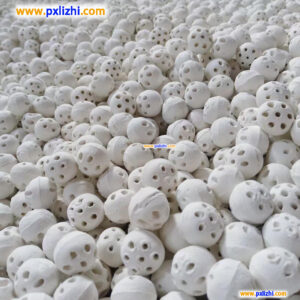“`markdown # Inert Ceramic Balls: The Ultimate Guide to Applications and Benefits “`

Inert Ceramic Balls: The Ultimate Guide to Applications and Benefits
Industrial processes demand reliable solutions for optimizing performance and efficiency. Among these solutions, inert ceramic balls play a pivotal role in enhancing operations across multiple sectors. Known for their durability and chemical inertness, these spherical fillers are engineered to withstand extreme conditions while improving system productivity.
Key Functions and Industrial Applications
Inert ceramic balls serve as supporting media and protective barriers in chemical reactors, distillation columns, and petrochemical plants. Their primary function is to distribute liquids and gases evenly, prevent catalyst bed compaction, and shield sensitive catalysts from thermal shock or mechanical damage. Industries such as oil refining, natural gas processing, and environmental engineering rely on these versatile components to maintain consistent process flow and extend equipment lifespan.
Chemical Resistance and Thermal Stability
Manufactured from high-purity alumina or silica-based materials, inert ceramic balls exhibit exceptional resistance to corrosive chemicals and high temperatures. This makes them ideal for harsh environments where metal components would degrade rapidly. Their low thermal expansion coefficient ensures dimensional stability even under rapid temperature fluctuations.
Economic and Operational Advantages
The implementation of inert ceramic balls translates to significant cost savings through reduced maintenance frequency and extended catalyst life. By optimizing fluid dynamics within processing units, they enhance mass transfer efficiency while minimizing pressure drops. These benefits contribute to lower energy consumption and increased throughput in industrial operations.
Customization for Specific Process Requirements
Available in various sizes and material compositions, inert ceramic balls can be tailored to meet specific operational parameters. Selection criteria include operating temperature ranges, chemical exposure profiles, and required crush strength. Proper sizing ensures optimal performance in both packed beds and random dumping applications.
Frequently Asked Questions
What industries commonly use inert ceramic balls?
These components are essential in petroleum refining, chemical manufacturing, fertilizer production, and air pollution control systems.
How do inert ceramic balls differ from active catalysts?
Unlike catalysts that participate in chemical reactions, inert ceramic balls serve purely physical functions as support media and protective layers.
What factors determine the appropriate size selection?
Size selection depends on column diameter, particle size of active catalysts, and desired void fraction for optimal flow distribution.
Optimize Your Processes Today
Ready to enhance your industrial operations with premium-quality inert ceramic balls? Our specialized solutions deliver proven performance improvements across various applications. Contact our technical team for personalized recommendations and discover how these versatile components can revolutionize your processes while reducing operational costs.